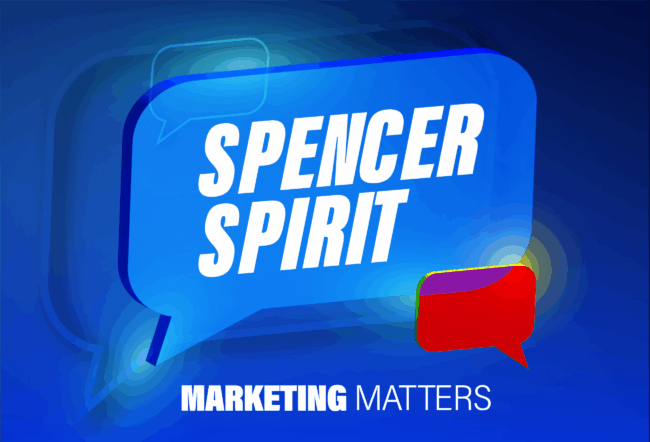Arnold Schwarzenegger and Salma Hayek singing off-key to “Electric Avenue” was amusing, but their star turn as Greek gods in a BMW commercial wasn’t enough to elevate this year’s batch of Super Bowl ads above middling.
“They were marginally better than they were last year, but I don’t think there were really any breakout hits that we’re going to remember 10 years from now. They were a little mediocre,” Wharton marketing professor Patti Williams said during a segment on Wharton Business Daily on SiriusXM. (Listen to the podcast above.)
Companies reportedly paid up to $7 million for a 30-second spot during the Super Bowl match-up between the Los Angeles Rams and the Cincinnati Bengals. As in previous years, brands relied heavily on humor and celebrities to deploy their messages. There was Tommy Lee Jones as a grumpy old man behind the wheel of a Toyota, besties Paul Rudd and Seth Rogen reminiscing over a bag of Lay’s potato chips, and Peyton and Eli Manning pitching for Ceasars Sportsbook alongside comedian J.B. Smoove and Oscar-winner Halle Berry.
“The Mannings were everywhere, weren’t they?” Williams said with a chuckle. “Every single ad I watched, I seemed to find one of them.”
But perhaps what stood out this year was the deep dive into nostalgia. A sense of the familiar was threaded throughout the ads, with repeat celebrity appearances and plenty of throwback tunes including Salt-N-Pepa’s “Push It” for Doritos, Bonnie Tyler’s “Total Eclipse of the Heart” for Kia spot, and Schwarzenegger’s aforementioned warbling to the ‘80s chart-topper by Eddy Grant.
Even the hip-hop halftime show was a nod to nostalgia, with Dr. Dre, Snoop Dogg, Eminem, Mary J. Blige, Kendrick Lamar, and 50 Cent belting out songs that were emblematic for audience members in their 40s and 50s.
Williams said she wasn’t surprised that brands leaned into nostalgia during the tough times of the COVID-19 pandemic.
“Nostalgia is a common theme in Super Bowl ads in general. It brings together people of all ages, so this is something that appeals to everyone,” she said. “But especially in times of uncertainty, when people are dealing with a lot of stress, nostalgia often is a place of comfort.”
For its share of nostalgia, Budweiser returned to the story of the Clydesdale and yellow Labrador after opting out of running a commercial during the 2021 Super Bowl broadcast. Williams said that although the horse and dog are heartwarming, the ad missed its mark.
“My own sense is while [Budweiser’s] ambition was pretty grand in that ad — to speak to resilience in America and a sense of hopefulness — the ad itself didn’t play very well,” she said. “It was so quick that there wasn’t a lot of time to build that kind of empathy and bond with the characters. I was just trying to figure out what was happening the whole time.”
Williams also had mixed feelings on Toyota’s commercial featuring the McKeever brothers. The ad is a moving account of the brothers’ lifelong Paralympics journey, but it doesn’t exactly sell the brand.
“They were marginally better than they were last year, but I don’t think there were really any breakout hits that we’re going to remember 10 years from now.” –Patti Williams
“I don’t really get how it relates back to Toyota,” the professor said. “It’s a beautiful ad, it’s a beautiful story. What does it do for Toyota and what is it telling me that Toyota can do for me? I’m not really sure I get that sense.”
Williams praised Google’s ad for its Pixel 6 phone camera that accurately captures darker skin tones. Given the controversy swirling around the NFL and its track record on race, it was disappointing that few companies sought to highlight diversity in their Super Bowl ads this year, she said. But Google did.
“There was a lot of pressure around the advertisers this year in the Super Bowl to really speak to diversity, equity, and inclusion, whether it was in casting or directing or behind the camera. Maybe there were a few more faces of color in the ads, but that wasn’t a strong point overall,” Williams said. Google “wasn’t performative in its desire to address DEI issues. It really addressed a meaningful issue and showed its technology doing well in a place that really matters.”
Among her favorites was the Amazon Alexa ad featuring celebrity couple Scarlett Johansson and Colin Jost. The commercial comically played on the privacy concerns around data collection, with the device revealing the sarcastic inner thoughts of both husband and wife.
“They are very charming, and the ad itself shows you the effectiveness of Alexa,” she said. “It’s a little bit creepy at the same time. Do I love the idea that Alexa may be reading my mind? That seems a little bothersome.”
Meanwhile, Coinbase is getting buzz for its silent ad featuring a QR code bouncing around a black screen like the old Atari game of Pong.
“That seemed like a crazy ad to me,” Williams said, pointing out that it ranked last on the popular USA Today’s Ad Meter while Adweek gave it top marks for simplicity. She said it would be interesting to know how many viewers actually scanned and opened the code.
Ultimately, she said, the best commercials are the ones that provide the greatest return for the brands, which is why so many of the Super Bowl spots are released as a preview to generate publicity before the big game or are part of a larger campaign that continues after the Lombardi trophy is won.
“You’re spending $7 million for 30 seconds here. It’s hard to get enough return from that one 30-second instance to really make the ad pay off for your business or even in terms of the attention you might be getting,” Williams said.



